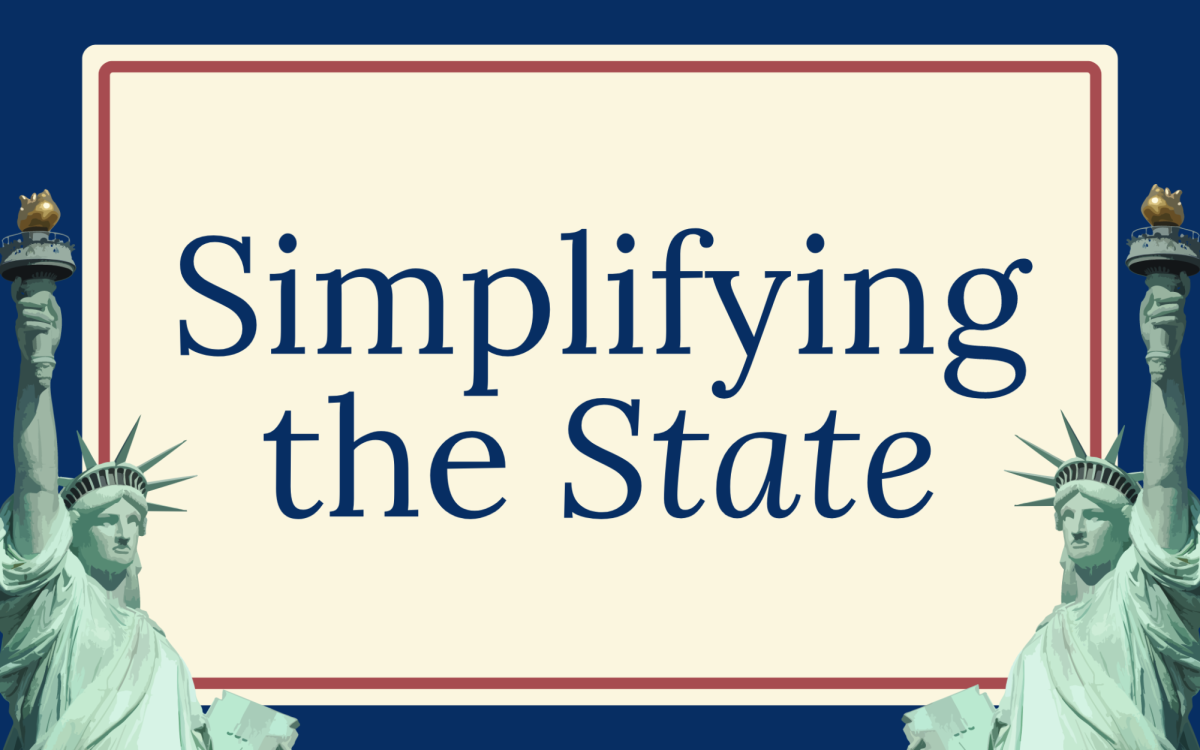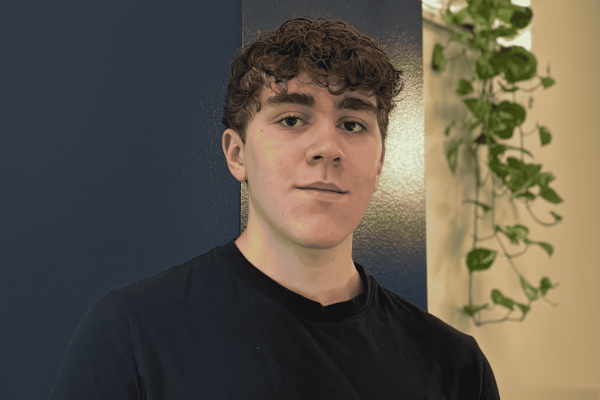Why is Trump suddenly interested in the Panama Canal? In this episode, we break down the history of the canal, how the U.S. lost control of it, and why Trump is talking about taking it back. We also dive into China’s presence in the region, Marco Rubio’s upcoming visit to Panama, and whether a U.S. takeover is even realistic.
Adam (00:00.598)
Welcome back to Simplifying the State. I’m Adam Watson. All right, so we’re going to kick off this episode, and I’m going to ask Nicholas something. What do you think the French, mosquitoes, and Central America all have in common?
Nicholas (00:10.471)
The French mosquitoes?
Adam (00:12.432)
No—the French, mosquitoes, and Central America.
Nicholas (00:17.835)
They’re all involved in the Panama Canal.
Adam (00:21.470)
Correct. So that’s what we’re going to be talking about today—the Panama Canal, its history, and why Trump is suddenly so interested in it. Nicholas, you want to give us a brief rundown of the history?
Nicholas (00:32.413)
Yeah, I can do that. The Panama Canal started as a project that was supposed to be completed by the French, but they eventually gave up and thought it was too difficult. Then the United States came in, and as a sort of expense for Panamanian independence, the newly independent Panama gave up a short strip of its territory where the U.S. built the Panama Canal.
Adam (00:52.792)
Wait, what do you mean “in exchange for Panama’s independence”?
Nicholas (00:57.205)
Basically, the U.S. helped Panama win its war of independence against Colombia. In exchange, the U.S. essentially forced Panama to give up what would become the Panama Canal.
Adam (01:10.968)
Okay, continue.
Nicholas (01:12.395)
Yeah, and the Panama Canal was eventually finished. There were various ways it was run. In 1977, Jimmy Carter and Panama worked together to officially give the canal back to Panama, and that process was completed under Bill Clinton. Since 2000, the canal has been under Panamanian control. Certain companies manage aspects of it, but at the end of the day, it’s under the control of Panama.
Adam (01:50.298)
Yeah. So connecting that to today—at a press conference before his inauguration, President Trump spoke about wanting to take back the Panama Canal. He also talked about a bunch of other things, including taking back Greenland from Denmark, although that wasn’t really “taking back” because it was never ours—except for that brief point in World War II. But we’ll get to that when we talk about Greenland.
He claimed that the Panamanians were scamming us, not treating us fairly, and giving preferential treatment to other countries, specifically China. He brought it up again in his inauguration speech, falsely claiming that the canal was under the control of the Chinese government. In reality, it’s managed by the Panama Canal Authority, a Panamanian government agency.
What he was probably referencing is that various Chinese firms—some based in Hong Kong—have been investing in the Panama Canal. But companies from other countries do the same, so it’s not unique. Because China is seen as an adversary of the U.S., it’s probably more concerning when they do it.
He didn’t rule out military force. He said he may use both military and economic measures, meaning he could impose tariffs or something like that on Panama to renegotiate a trade agreement—or even take control of the canal. Marco Rubio, the secretary of state, is going to Panama for his first state visit, so it’ll be interesting to see if that has anything to do with Trump’s ambitions for the canal.
Adam (03:36.474)
All right, now you ask questions about that.
Nicholas (03:40.731)
Can you go into more detail about the Chinese presence in the Panama Canal and the surrounding area?
Adam (03:51.950)
Yeah, there are various Chinese firms investing in projects around the Panama Canal—bridges, rail lines, port facilities, etc. Typical infrastructure projects you’d expect in a canal of that size.
China has been increasing its investments in Panama and across Central and South America. But because the Panama Canal is such a vital trade artery, the U.S. is especially concerned about it.
Nicholas (04:36.955)
I forgot—what was the last point you made before my question?
Adam (04:44.520)
Uh… I don’t know. What did I say?
Nicholas (04:50.843)
I had a follow-up question, but I forgot what it was.
Adam (04:54.638)
Marco Rubio’s state visit?
Nicholas (05:00.023)
Yeah, yeah. So about that—I heard the current president of Panama said the Panama Canal is “not up for grabs” and that there will be no discussion on it. But Marco Rubio pressed that there will be a discussion. What do you think about that?
Adam (05:19.182)
Right. I mean, of course, the Panamanian president isn’t going to say their territory is up for grabs. Rubio probably does want a discussion, but it’s unclear whether that discussion will be about renegotiating the treaty to make it more favorable for the U.S. or something else.
Colombia also said it would protect Panama’s independence, which is interesting considering Colombia used to control the area. Now they’re saying they’d defend Panama against another country trying to take its land.
Real quick, could you talk more about that treaty? I don’t know much about it.
Nicholas (06:11.009)
The one that gave the Panama Canal back to Panama?
Adam (06:14.318)
Yeah, that was one of Jimmy Carter’s biggest moves as president. Could you talk about that more?
Nicholas (06:23.521)
Sure. The treaty that returned the Panama Canal also included a neutrality clause, meaning Panama cannot use the canal as a political tool. They can’t increase or decrease tolls based on nationality, nor can they close the canal to specific nations. It ensures that the canal remains accessible to everyone, though countries still have to pay Panama to use it.
Adam (07:06.348)
Right. So basically, it guarantees equal access. No country gets overcharged or undercharged.
Nicholas (07:16.047)
Precisely.
Adam (07:23.294)
Why did Carter sign that treaty? What led to it? It seems odd for a president to just say, “Here’s a strategically vital waterway—take it back.“
Nicholas (07:34.600)
The process really started with a riot in 1964 over the right to fly the Panamanian flag in the canal zone. That sparked tensions between U.S. residents and Panamanians, leading to a diplomatic break between the two countries. Political instability prevented negotiations until Carter’s presidency.
During his campaign, some of his advisors—like Sol Linowitz and Cyrus Vance—convinced him that giving back the canal was in the U.S.’s best interest. That’s why it became a priority early in his administration.
Adam (08:27.523)
Do you think the U.S. would actually invade Panama to take it back?
Nicholas (08:34.524)
Unlikely. Invading Panama to take control of a canal that the U.S. already has access to would be a disaster economically and diplomatically. The U.S. uses the canal more than any other country, followed by China. But even China mainly uses it for trade with U.S. ports. So taking over the canal wouldn’t really be beneficial.
Adam (09:07.886)
Yeah, I read that one of the most common trade routes through the canal is from New York to Shanghai. And an invasion wouldn’t be unprecedented—remember Operation Just Cause in 1989? The U.S. invaded Panama to remove Manuel Noriega, who had criminal ties. We propped him up during the Cold War, but then George H.W. Bush decided to take him out.
But this situation would be harder to justify. We already have equal access, so what’s the real reason?
All right, thanks for listening. Next week, we’ll talk about another one of Trump’s territorial ambitions—Greenland. See you next time.




